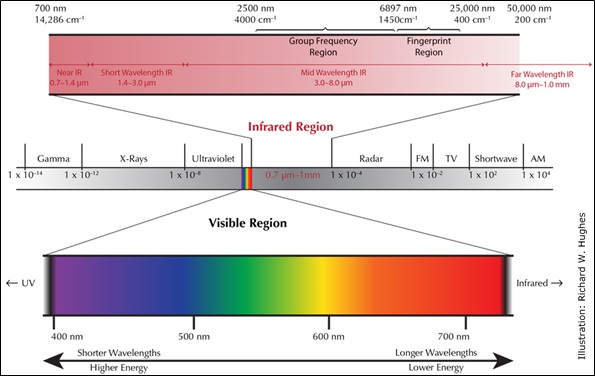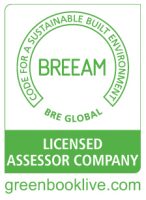Infra-red thermography

Infra-red thermography is the science of using electric optical devices to detect heat from structures or equipment being inspected. Any object that has a temperature above absolute zero (-273.15 °C = 0 K) emits radiation in the infra-red region. Human eyes can only detect visible light (or visible radiation) between 380 and 700 nm, which is only a very small part of the electromagnetic spectrum. Although we cannot see it, the nerves in our skin can feel the infra-red radiation as heat and thermal imagers can correlate it to the surface temperature, once certain parameters – such as emissivity – are correctly set for that given material.
Thermal imaging can be used for building diagnostics or for mechanical, electrical and process inspections. Typical examples are:
- Moisture detection, which could be caused by water penetration or water condensation;
- Building insulation inspections and wall texture investigations;
- Identification of thermal bridges in a building’s envelope;
- Air leakage paths, usually in combination with Blower Door Testing (air pressure test);
- Confirmation of the exact location of underfloor heating/cooling pipes and of materials’ levels in vessels such as storage tanks, silos etc.;
- Planned Preventive Maintenance. In fact, excessive heat often precedes electrical failure and thermal imagers can reveal:
- unbalanced loads in three-phase systems;
- poor connections;
- faulty solar cells in a solar photo-voltaic (PV) module;
- lack of lubrication or coupling alignment problems in motors’ casing and bearings;
- refractory insulation breakdown;
- malfunctioning of by-pass valves, steam traps, drive belts, conveyors, brakes, gearboxes, heating and cooling systems, multi-stage air compressors etc.
Infra-red thermography is a non-invasive and non-destructive technique, which means that the article being examined is never altered during the inspection, with associated time and cost savings. The quick non-contact thermographic surveys are not disruptive (no downtime) and align with Health & Safety requirements when inspecting electrical and hot machinery in operation.
During building and industrial energy surveys a number of defects and inefficiencies which may not be visible to the naked eye can be easily identified by exploiting infra-red thermography. Equipment failures have clear and recognisable thermal signatures and temperature is an impeccable indicator of component failure before major faults occur. Most insurers apply a reduced insurance premium when infra-red thermographic surveys are regularly undertaken, which maximise the life expectancy of plant and equipment and minimise the risk of potential fire hazards.
The International Standard ISO 9712:2012 specifies the different requirements for the qualification and certification of personnel who perform non-destructive testing (NDT). The roles and responsibilities of personnel are generally as follows:
- Level 1: technicians qualified to perform only specific calibrations and tests under close supervision and direction by higher level personnel. They can only report test results.
- Level 2: engineers or experienced technicians who are able to set up and calibrate testing equipment, conduct the inspection according to codes and standards (instead of following work instructions) and compile work instructions for level 1 technicians. They are also authorized to report, interpret, evaluate and document testing results. They can also supervise and train level 1 technicians.
- Level 3: specialized engineers or very experienced technicians. They can establish NDT techniques and procedures and interpret codes and standards. They also direct NDT laboratories and have central role in personnel certification (i.e. provide formal training courses for level 2 personnel).
Infra-red thermographic reports should always be signed by competent professionals, i.e. level 2 or level 3 personnel, certified according to the ISO 9712:2012 standard.









